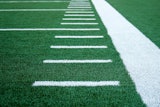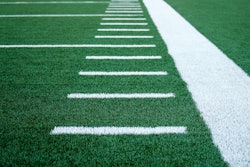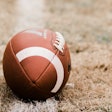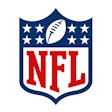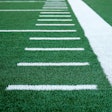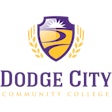As AEDs become as common as fire extinguishers in airports, hotels, casinos and police cruisers, health advocates charge that the recreation and fitness industry is wasting precious time.
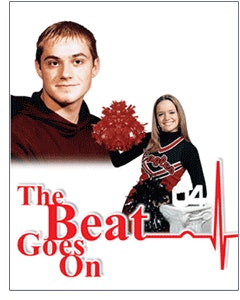 The Beat Goes On
The Beat Goes On
For many people stricken in places where AEDs aren't available, help comes too late. That image -- a sudden cardiac arrest victim lying on the ground as the minutes tick away -- haunts surviving relatives, friends and bystanders. For advocates of the devices (public health organizations, AED manufacturers and, especially, parents of young victims), it's also an agonizing symbol of the time it is taking for sports, recreation and fitness program providers to join the AED revolution.
Resistance Training
The revolution, it appears, will be mandated. A small but growing number of city councils, boards of education and state legislatures in various jurisdictions are heeding the cry of bereaved parents and spouses and passing laws requiring that AEDs be installed in public places. In 2004, Illinois became the first state to require widespread placement of AEDs in physical fitness facilities, including health clubs, college and school gymnasiums, and indoor park district facilities. New York, Louisiana and Rhode Island have since also passed legislation requiring AEDs in fitness facilities; under New York's law, which is to be phased in over the next several years, health clubs and fitness centers with 500 or more members will be required to have at least one AED, and facility employees will have to be certified in CPR and in AED operation. (A New York state law mandating AEDs in public schools has been credited with 10 lives saved since it was passed in 2002.)
New York's new law will supercede one passed earlier in the year by the Suffolk County (N.Y.) Legislature that targeted health, tennis and golf clubs; Montgomery County, Md., was another highly populated county to mandate AEDs in fitness facilities last year. In addition, Weston and Coral Springs, Fla., joined the growing number of communities to pass AED laws that cover restaurants, fitness centers, hotels and city government facilities. Coral Springs' legislation covers facilities larger than 1,500 square feet and restaurants with more than 100 seats; Weston's ordinance requires AEDs in all public and office buildings of more than 20,000 square feet, and commercial and retail spaces in excess of 35,000 square feet.
Those who oppose such measures -- or those, such as the International Health, Racquet & Sportsclub Association, who say they want to see AEDs in fitness facilities but oppose being required to put them there -- offer a variety of reasons. AEDs, they complain, are costly (the range is currently about $1,400 to $3,000) and open facility owners up to greater liability. Also, some have argued, medical equipment belongs more properly in medical facilities and in emergency first response vehicles such as (in addition to ambulances) those owned by police and fire departments. Finally, as Earl J. Acquaviva Jr., associate general counsel for Bally Total Fitness, wrote in a letter to the lawmaker who sponsored the Suffolk County bill, "While any sudden cardiac arrest incident is tragic, the risk of a cardiac event occurring in a health club is extremely small."
While it is a fact that 85 percent of cardiac arrests occur in homes and hospitals, views such as the one expressed by Acquaviva are enough to make the mother of a dead teenager scream.
"We had a school superintendent say to another mother and me, ' The chances of this happening are so minor that it's just not worth the expense,' " says Rachel Moyer, an advocate for AEDs in schools since the Dec. 2000 death of her 15-year-old son. "I was looking at him thinking, ' What are you, crazy? To say that to parents who have lost a kid?' "
Liability fears are widespread enough that schools have actually refused free AEDs (Moyer says the Littleton, Colo., school district, of all places, refused one from the parent of a child who died of sudden cardiac arrest in a school gym). Those fears, however, appear to be increasingly unfounded. All 50 states have added AEDs to their existing Good Samaritan laws, and the courts have begun to view AEDs as helping to constitute a "reasonable effort" to protect patrons. As Paul Samide, a partner and national sales manager with VitalTen (the exclusive distributor of Zoll Medical AEDs), says, "The reality is that there's a legal mandate right now." Kim Redfield, a Milwaukee-based regional manager of emergency cardiovascular care programs for the American Heart Association, agrees. "Facility owners are so uncertain about liability issues," she says. "People wonder, ' If we have an AED and somebody doesn't use it, will we get sued? If somebody uses it incorrectly, will we get sued?' They don't understand that these are machines that grade-school children can use."
"The fact is that when people exercise, their heart gets stressed," adds Cathy Thompson, market development manager with AED manufacturer Philips Medical Systems. "I know of a 26-year-old woman in Portland, Ore., who was in great shape, doing her squats at a club, when she collapsed from a sudden cardiac arrest. She was saved by one of our defibrillators. Fitness centers are places where this is happening a lot, and I just can't believe that club owners would still be resistant. They should be afraid of liability if they don't have an AED."
As part of Philips' working relationship with IHRSA (its HeartStart brand enjoys "official AED of IHRSA" status), member clubs get perks such as special pricing and what Thompson calls "medical direction." Yet, the association's machinations have doubtless left its members wrestling with conflicting messages. IHRSA has proudly publicized its lobbying efforts to strengthen legislative bills' liability protection for clubs and to shield clubs from immediate cash outlays for AEDs, but the group's self-proclaimed "success" in delaying implementation of AED laws has a darker and potentially greater cost.
"They do have an interesting stance," Thompson concedes. "They're working behind the scenes to change the compliance date, push it out a little bit, but you're not always doing your people a favor by doing that. New York's law gave health clubs six months to put in AEDs, and IHRSA managed to get that pushed out to 18 months. I'm sure there have been sudden cardiac arrests at New York clubs between the time that it should have been mandated and when it actually is, and if they get sued they'll be paying a lot more."
The Human Cost
Gregory Moyer, Rachel's son, was 6-foot-3 and 220 pounds at age 15 and "hadn't been sick a day in his life," according to his mother. The Moyers had decided to send their son to a new, small Catholic school because they didn't want him to play football for the local high school. "We were afraid he'd get hurt," she says. "Ridiculous."
His first basketball game took place in the school's brand-new gym, located 23 miles from the nearest hospital, in a rural area that lacked cell phone coverage. Rachel has a video of the game, which was scheduled to be shown on local television; she has scanned it countless times, searching for clues that might make what happened explicable. She never sees anything amiss. Gregory doesn't appear to be short of breath, doesn't rub his chest. She sees Gregory leave the court after the first half and walk to the locker room. Once there, beyond her gaze, Gregory is talking to a teammate while sitting on a bench, when he collapses.
Minutes later, the Moyers were summoned to the locker room. "When I got there, he was unconscious," Rachel says. "I grabbed his head and said, ' Gregory you're not breathing, why aren't you breathing?' And he really heard me, because his eyes opened and he tried to gasp for that one breath, and it didn't happen. It took three phone calls to an emergency dispatcher -- they called it in as a seizure -- and 35 minutes for the ambulance to arrive."
The Moyers are almost five years removed from that awful day, and they now represent the most formidable of the approximately 25 grassroots organizations devoted to bringing heart-health education, funding and life-saving equipment to schools across the country. All of them are run by parents of dead schoolchildren, but none have been as effective as the Gregory W. Moyer Defibrillator Fund (gregaed.org) in giving an electric jolt to balky legislators, school administrators and potential donors to the cause. As of early August, they had donated 450 AEDs to facilities in 22 states, many to schools where children have died. But they've also donated equipment and raised AED awareness at YMCAs, police and fire stations, golf courses, churches and municipal buildings.
Rachel credits an emergency-room nurse at the hospital where Gregory's body was brought for starting the family on its crusade. "She said to me, ' There should have been an AED there.' We said OK, instead of flowers we'll ask people to donate money so we can buy AEDs. Gregory died on a Saturday, and by Tuesday we had enough money to buy seven. Money just continued to come in. As it did, we talked to school superintendents and said, ' OK, if we're going to donate one, how many are you going to buy?' They'd come from some big school districts and say, ' We're going to buy two, or three,' and we'd say, ' That's like playing Russian roulette. How do you know a cardiac arrest is going to happen in the biggest schools? Are you saying families at the smaller schools aren't as important?' "
Eventually -- it didn't take long -- the Moyers had written and procured grants to equip their entire county (they live in Shawnee-on-Delaware, Pa., on the New Jersey border). So, they moved on to other areas as people elsewhere contacted them for help or the Moyers read accounts of other tragedies in newspapers or on the Internet. Once on the web, they discovered other families with distressingly familiar stories and very similar missions. This year, these groups have begun to create the blueprint for a national umbrella organization in the hopes of bringing even more pressure to bear on bureaucrats to make AEDs a national health-care priority. Called the National Cardiac Parents Network (ncpn.org), the group is in the process of establishing a board of directors and preparing for its first national meeting, to be held Jan. 13-15 in Las Vegas.
Linette Derminer (kenheart.org), whose 17-year-old son, Ken, died at a football training mini-camp at his school in June 2000, is the group's spokesperson and de facto chair (Rachel Moyer is on the board). Ken was diagnosed with a heart murmur at age 13, and Linette has therefore devoted her efforts, since his death, to bulking up the basic pre-participation health screening in use in her home state of Ohio. "Two years ago, our entire physical would fit on a postcard," she says. "It didn't ask anything; it asked if you wore contacts. We petitioned the Ohio High School Athletic Association to ask heart-history questions. Now it's a two-page questionnaire."
Derminer says that of all the goals of the various groups, AED placement is in some ways the easiest sell. "It's an easier battle than heart screenings because of its cost-effectiveness per child," she says. "The medical community hasn't found a way to make screenings more affordable, but we've been able to get more hospitals and cardiologists to volunteer." As an example, Derminer notes a medically based (and as yet unnamed) group out of the University of Mississippi Medical Center, which is also on the verge of going national and held a "Summit on Sudden Death in Athletes" on Sept. 12. "It's nice to have the medical community stepping forward and being more aggressive," Derminer says.
Remaining at the forefront of these efforts is the Children's Hospital of Wisconsin's Project ADAM, which since 1999 has served as a model of hospital-based heart advocacy (see "Matters of the Heart," Jan. 2003, p. 28). Named for Adam Lemel, a 17-year-old Whitefish Bay (Wis.) High School student who died during a 1999 basketball game, Project ADAM helps schools create and sustain their own public access defibrillator (PAD) programs -- and it's yet one more largely regional group that is in the process of going national, having established new affiliations with two health-care systems (Children's Healthcare of Atlanta and Florida Hospital). Interestingly, while the organization was instrumental in getting federal legislation passed (the ADAM Act, 2003), it is now forced to lobby to be designated the official national clearinghouse of school-based AED education. "We have to have appropriations determined by the Senate in order for the ADAM Act to even be functional; once it is, different entities can apply to be the national clearinghouse," says Aimee Gironimi, Project ADAM's program administrator. "We are hopeful we will be so designated, especially since the Act was named after our project."
All of the various regional and soon-to-be-national organizations are awaiting the American Heart Association's revised scientific guidelines, which are updated every five years and are due at the end of this year, and will cover all aspects of basic life support, including the use of AEDs. Since the last round of revisions back in 2000, the AHA has already gone on record to support pediatric defibrillation, and rumor has it the AHA could even give AEDs a further boost in importance by streamlining (or removing) the rescue-breathing aspect of CPR from its recommendations for first responders. Some experts believe that proper AED use could easily take the place of mouth-to-mouth resuscitation, which is sometimes performed hesitantly (and incorrectly) by facility managers or bystanders. "The new guidelines will definitely impact how AEDs will be used," Redfield says -- in all likelihood making AEDs, as Gironimi puts it, "the most crucial link in the chain for the early rescuer."
Taking Heart
Increased competition has led to a steep drop in AED prices over the past five years, and AED manufacturers -- three of which (Zoll Medical, Philips and Medtronics) are medical-equipment giants -- are boosting their education and grant programs, further bringing AEDs within financial reach of small school districts and health clubs. Make no mistake, the competition is fierce. Medtronics won the contract to service Ohio, where Gov. Bob Taft signed a bill in 2004 earmarking $2.5 million from the federal tobacco settlement to equip the state's schools with AEDs (House Bill 434). In addition, the company's national awareness campaign, "Keep the Beat," kicked off June 17 and was tied in with James Taylor's summer tour (the three-year program is being presented in partnership with the Indianapolis-based Neighborhood Heart Watch). "We're selling merchandise at the venues, and asking people for donations," says Joyce Szymanski, Medtronics' director of strategic communications, adding that AEDs would be sent out after the tour ended in September.
Zoll Medical, meanwhile, has been New Hampshire's AED provider since 2002, offering units for as little as $773 apiece through a grant program funded through the New Hampshire Bureau of Emergency Medical Services' PAD program. Elsewhere, Samide says, "buy nine, get one free" is also a standard method of making AEDs more affordable, and while manufacturers may bemoan their shrinking markups, at least Access Cardio and its $1,100 units are history. That firm went bankrupt after an FDA recall, a "get what you pay for" moment if ever there was one.
Manufacturers have also stepped up their efforts to offer education and training for individual PAD programs; taking the lead is Philips, whose HeartStart Essentials Toolkit is a software package that Thompson says "allows people to track supplies, maintenance records, locations of AEDs, and who's been trained and retrained. It's a program to help track your program." Says Samide, "Obviously, you can't just buy an AED; you have to have the whole program in place. You have to tell people how to use it correctly, how to maintain it. It's been estimated that half of AEDs five years or older have expired batteries or pads (the conductive gel has a shelf life). And you have to practice your scenario. You're going to get used to having a dead person on the floor without practicing? I don't think so. You have to have somebody fall down, and have people respond."
Increasingly, people are responding, and responding appropriately. And whatever credit is given to the companies that make AEDs and the national advocacy organizations that have made AED awareness a priority, more must be given to the families of the dead. While sudden cardiac arrest can happen to anyone -- exercisers of any age, spectators, even the postal delivery person dropping off a package -- the most motivated groups have been, as noted, parents of schoolchildren, and these parents' stories have proven to be the most effective advocacy tools there are. Rachel Moyer notes that while multimillion-dollar lawsuits like the one filed in August by a mother against 24-Hour Fitness on behalf of her deceased 41-year-old son are bad publicity, cases involving children are in another league. "There was a 4-year-old at Ripken Stadium in Aberdeen, Md., where I grew up, who was hit in the chest by a ball and died on Father's Day," she says. "Kids are dying all over the place! You have to show legislators and administrators the face of the problem, let them know it happens everywhere."
You also have to have an advocate who won't back down. Moyer's reputation for tenacity stems, in part, from her response to administrators who refuse free AEDs -- she asks them to "put it in writing that they've been offered one and refused it." That usually, but not always, convinces them. The Harford County, Md., school system where she and her husband once taught recently refused seven, one for each of seven high schools. Moyer calls it "pathetic" -- and she's unapologetic.
"What if it was your child?" she asks. "Gregory was our youngest, our only son, only in the 10th grade. We thought our activities would be centered around him as he went through high school, and after. We lost that, and we feel like he left us with a task."
See kenheart.org's database of sudden cardiac arrest incidents.














